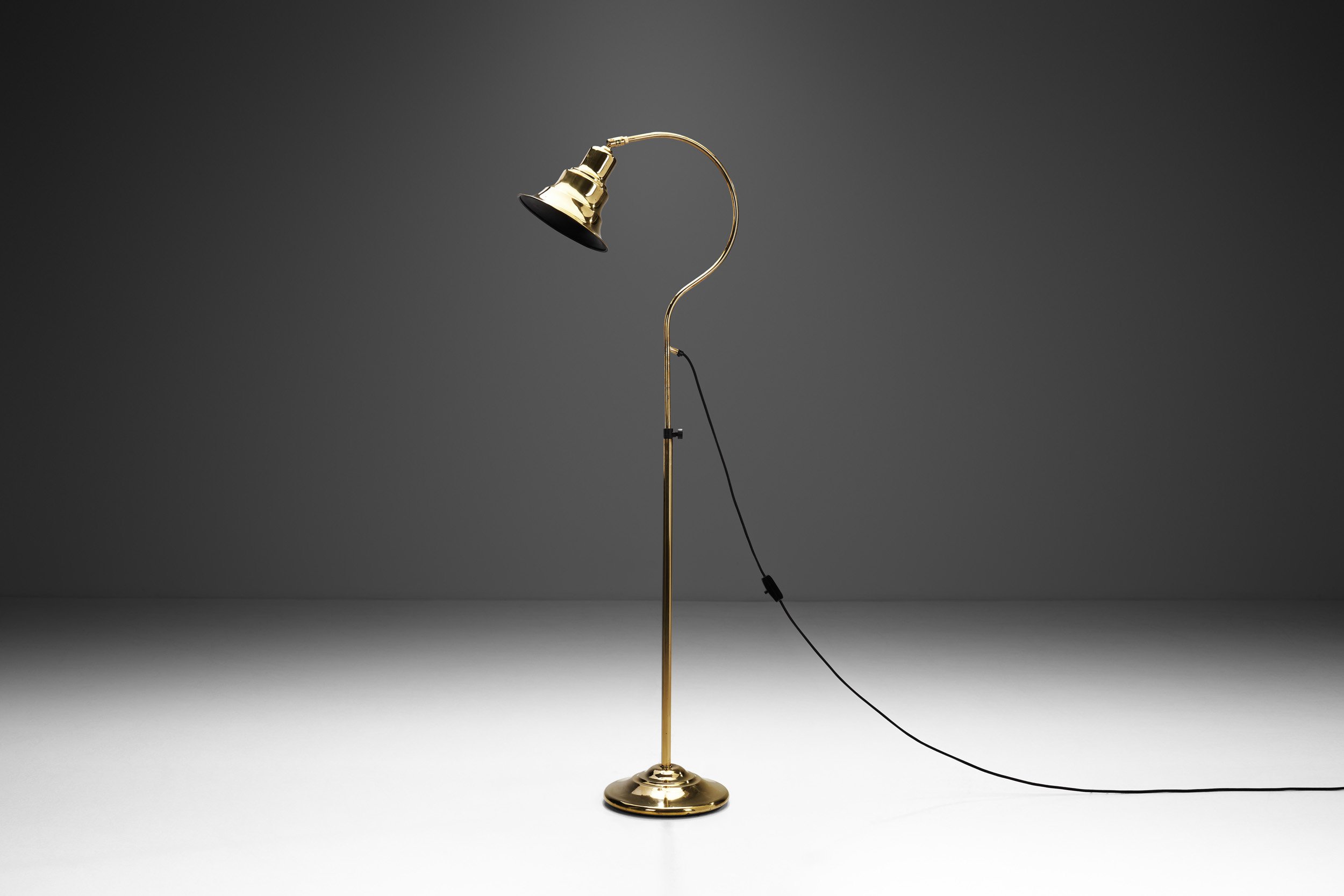Tapio Wirkkala Model "K10-11" Floor Lamp for Idman, Finland 1950s



















Tapio Wirkkala Model "K10-11" Floor Lamp for Idman, Finland 1950s
REQUEST PRICE HERE
Price category: 15,000 - 20,000 usd / eur
The “Crane” is evidence why Tapio Wirkkala can be described as one of the icons of Finnish design and a symbol of the international success of postwar Finnish design. He was a versatile designer and artist who could shift fluently between different materials and crossed established professional boundaries.
Wirkkala’s far-reaching career spanned multiple fields, from furniture design to sculpture and other art objects, and this can be clearly traced in this floor lamp. It functions as an art object just as much as a utilitarian lamp. With its slender shape and a brass and black lacquered body, this lamp is a great modernist piece that stands out in any space. The ingenious structure allows the height to be adjustable, and the design customizable. The main design elements are placed around the main functional parts, namely the shade, the adjusting rod, and the base. The sculptural brass rods cross each other similarly to a crane, and inspired the nickname of this model. The black lacquered conical shade and base, as well as the spherical counterweight stand out against the bright brass and add a modern edge to the design. The shade is lacquered white inside, creating a pleasant effect when the lamp is lit. Idman’s label engraved on the brass handle. Idman produced the models of some of the most renowned Finnish lighting designers of the time, including Tapio Wirkkala, Mauri Almari and Maria Lindeman.
Unlike other aesthetic movements, mid-century modern design was streamlined, while highlighting the materials used. The vibe of this “Crane” floor lamp is fresh, retro-tinged, and completely alluring with its dedication to quality and practicality wrapped up in beautiful design that will never go out of style.
Condition:
In good vintage condition. Wear consistent with age and use. The brass has a beautiful patina.
Dimensions:
26.37 in W x 7.08 in D x 51.39 in H (height is adjustable)
67 cm W x 18 cm D x 128 cm H (height is adjustable)
Literature:
Tuula Sakalari, Katri Lehtova, Werner Söderström, “Suomalaisia Tuolej”, Osakeyhtio, Helsinki, 2012, pp. 96 & 97
About the designer:
Tapio Wirkkala (1915-1985) can be described as one of the icons of Finnish design and a symbol of the international success of postwar Finnish design. He was a versatile designer and artist who could shift fluently between different materials and crossed established professional boundaries: he worked on everything from refrigerators to banknotes and from furniture to striking jewels. The most important materials for Wirkkala were wood and glass – he never ceased to explore the possibilities they offer.
Tapio Wirkkala studied sculpture at the Helsinki Central School of Industrial Design from 1933 until 1936, but he was also a self-studied artist in many areas, including glass design. His success as a glass artist began in 1946 when he designed one of his most famous works, the Kantarelli vase, for Iittala. Wirkkala gained worldwide success in 1951 at the Milan Triennial, where he received three Grand Prix awards: for the exhibition architecture, glass design and wooden sculptures. Many of his glass works for Iittala were also awarded later in the 1950s at the Milan Triennial. In the years 1951-1954, Wirkkala worked as the artistic director of Helsinki Central School of Industrial Design. In 1955, he received a Pro Finlandia medal and in 1972 the Academy of Finland's honorary title of academician.
The first mass-production glassware range designed by Wirkkala was the Tapio series launched in 1954. The popular Ultima Thule glassware range, created in 1968, was based on the so-called ice glass technique, and the designer himself was involved in developing it at the Iittala glass factory. Wirkkala also received important commissions from abroad: in the mid-1960s he started to design glass objects for Venini Glassworks in Italy, where he created the Bolle bottles for the Venice Biennale collection in 1966. One of Wirkkala’s most significant commissions abroad was the work at the Rosenthal porcelain factory in Germany: he worked as a freelance designer for Rosenthal for almost 30 years, and the most influential result was the Paper Bag vase (1977), still today one of Rosenthal’s best-selling products.
Tapio Wirkkala was also a furniture designer and a sculptor. He started his career as a sculptor in the 1930s, but abandoned the traditional sculpture in the post-war years. The result was a series of unique plywood sculptures which combined form and movement in the vibrant, densely lineated surface of plywood. Wirkkala’s sculptures represented exceptional abstractionism and gave Finnish sculpture art a new direction at a time when the official line preferred monuments and heroic sculptures.








